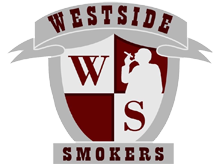Another influencing factor is the cooperation that the costing department can receive from other departments in the organization. Cost data obtained from costing How to start a bookkeeping business in 9 steps enable managers to strive toward efficiency for the whole organization. Cost data provide organizational guidelines for various managerial decisions.
If there is the scrap value of the units lost, such value is credited to an abnormal loss account, and the balance remaining after that in that account is written off to the costing profit and loss account. The process account may be ruled with an additional column to show the unit cost. When there is abnormal gain, the process and units representing normal loss fetch some scrap value. The balance at the credit of abnormal gain account is transferred to profit and loss account for the year after an adjustment of “scrap value”. Normal production is represented by input minus normal loss relating the performance.
In what types of industries is process costing adopted?
Where degree of completion of opening work in progress is not given, average method is used. The objective of the first in first out method is to value the inventory at the current costs and as such the main problem is to calculate the equivalent production under this method. The first in first out (FIFO) method of costing is used to introduce the subject of materials costing.
While it has many advantages, manufacturers should know some disadvantages of using a process costing system. (5) There is also the difficulty of ascertaining the value of closing stock where output of one process is transferred to another process at market price. (2) It is difficult to apportion total cost among joint products and bye-products. (8) Because cost of production is ascertained periodically, management is in a position to receive various reports periodically and review the progress and efficiency of the production process. (2) Each Process Account is debited with material cost, labour cost, direct expenses and overheads allocated or apportioned to the process. (11) The semi-finished products are expressed in terms of complete products.
First in, first out (FIFO) method
For the total product cost, we will sum all costs from all processes. The process costing system accumulates costs when a large number of identical units are being produced. In this case, it is more effective to accumulate costs for a large batch of products and then distribute them to individual units produced. The presumption is that the cost of each unit is the same as the cost of any other unit, hence tracking information at the individual unit level is unnecessary. A process costing system accumulates costs when a large number of identical units are being produced.
If production is not homogeneous, as in the case of foundries making castings of different sizes and shapes, the average cost may give an incorrect picture of cost. The cost, ascertained at the end of the process is called historical cost which is of very small use for managerial control. Since it is based on historical costs, it has all the weaknesses of historical costing. Cost Control – Being every job is separate and each job has special characteristics and the job is not standardised so cost control is difficult. (2) Cost unit – Each distinct process of the production is cost unit.
What Are Some Best Practices for Implementing and Maintaining a Process Costing System in Manufacturing?
Technology can be used to analyze large amounts of data quickly and accurately, providing valuable insights into production costs. Advanced analytics techniques such as machine learning and artificial intelligence can be used to identify patterns in data and forecast cost variations. On the other hand, if the industry is less regulated and has more flexibility, a simpler method like the standard cost method may suffice. On the other hand, if the process is more straightforward, the standard cost method may be sufficient. Process costing enhances cost transparency by providing a detailed breakdown of the cost of each process. This helps managers understand how each product’s cost is calculated and explain it to investors and customers.
Process Costing will allocate same overhead cost to all product, which will result in less accurate and it will impact to product cost and selling price as well. As a result, our selling price will be much higher or under the market, it will impact to our profit. Finally, the Packaging department, the place where shoes are matched by size and https://accounting-services.net/bookkeeping-tax-cfo-services-for-startups/ put into a retail box. The cost of direct labor in this department during March has only USD 30,000 and they complete the work for 12,000 pairs of shoes. Process costing is generally used in industries that deal with chemicals, distilled products, canned products, food products, oil refineries, edible oils, soap, paper, textiles, and others.

Leave A Comment